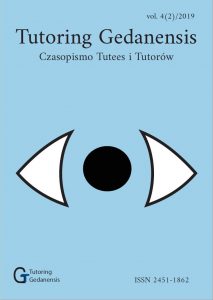Czy bioaerozole mogą być niebezpieczne dla człowieka?
Keywords:
bioaerozole, cyjanobakterie, Morze Bałtyckie, zanieczyszczenie powietrzaDownloads
References
Andreae M.O., Crutzen P.J., 1997. Atmospheric Aerosols: Biogeochemical Sources and Role in Atmospheric Chemistry, Science 276, California.
Aráoz R., Molgó J., Tandeau de Marsac N., 2010. Neurotoxic cyanobacterial toxins, Toxicon, 56.
Bucka H., Wilk-Woźniak E., 1998. Dynamic of algae and cyanophytes developing in mass in dam reservoirs: the Wisla-Czarne reservoir and the Dobczyce reservoir (southern Poland), Fragmenta Floristica et Geobotanica Polonica.
Budzińska K., Jurek A., Szejniuk B., Michalska M., Wroński W., 2011. Mikrobiologiczne zanieczyszczenie powietrza na terenie oczyszczalni ścieków komunalnych, Rocznik Ochrona Środowiska, Bydgoszcz.
Burrows S.M., Butler T., Jöckel P., Tost H., Kerkweg A., Pöschl U. and Lawrence M.G., 2009. Bacteria in the global atmosphere – Part 2: Modeling of emissions and transport between different ecosystems, Atmos. Chem. Phys., 9, 9281–9297.
Burrows S.M., Elbert W., Lawrence G., and Poschl U., 2009. Bacteria in the global atmosphere – Part 1: Review and synthesis of literature data for different ecosystems, Atmos. Chem. Phys., 9, 9263– 9280.
Cox C.S., Wathes C.M., 1995. Bioaerosols Handbook, 1st Edition, CRC Press.
Degórska A., 2016. Pyły drobne w atmosferze. Kompendium wiedz y o zaniecyszczeniu powietrza pyłem zawieszonym w Polsce., Biblioteka Monitoringu Środowiska, Główny Inspektorat Ochrony Środowiska.
Falkowska L., Lewandowska A.U., 2009. Aerozole i gazy w atmosferze ziemskiej, Wydawnictwo Uniwersytetu Gdańskiego, Gdańsk.
Fröhlich-Nowoisky J., Kampf C.J., Weber B., Huffman J.A., Pöhlker C., Andreae M.O., Lang-Yona N., Burrows S.M., Gunthe S.S., Elbert W., Su H., Hoor P., Thines E., Hoffmann T., Després V.R., Pöschl U., 2016. Bioaerosols in the Earth system: Climate, health, and ecosystem interactions, Atmospheric Research 182, 346–376.
Juda-Rezler K., Toczko B., Degórska A., Frączkowski T., Gierczak T., Iwanek J., Klejnowski K., Kobus D., Markowicz K.M., Mitosek G., Pyta H., Ośródka L., Paciorek M., Pacyna J., Pastuszka J., Rogula-Kopec P., Rogula-Kozlowska W., Meizer M., Trapp W., Wiech K., 2016. Pyły drobne w atmosferze. Kompendium wiedzy o zanieczyszczeniu powietrza pyłem zawieszonym w Polsce, Biblioteka Monitoringu Środowiska, Główny Inspektorat Ochrony Środowiska, Warszawa.
Kothai P., Saradhi I.V., Pandit G.G., Markwitz A., Puranik V.D., 2011. Chemical Characterization and Source Identification of Particulate Matter at an Urban Site of Navi Mumbai, Aerosol and Air Quality Research, 11, 560–569.
Kruczalak K., Olańczuk-Neyman K., Marks R., 2002. Airborne Microorganisms Fluctuations Over the Gulf of Gdansk Coastal Zone (Southern Baltic), Polish Journal of Environmental Studies 11, 5, 531–536.
Lewandowska A.U., Staniszewska M., Witkowska A., Machuta M., Falkowska L., 2018. Benzo(a)pyrene parallel measurements in PM1 and PM2.5 in the coastal zone of the Gulf of Gdansk (Baltic Sea) in the heating and non-heating seasons, Environmental Science and Pollution Research, 25.
Lewandowska A.U., Śliwińska-Wilczewska S., Woźniczka D., 2017. Identification of cyanobacteria and microalgae in aerosols of various sizes in the air over the Southern Baltic Sea, Marine Pollution Bulletin, 125.
Małuszyńska I, Popenda A., Małuszyński M..J., Mercury in the environment, Warszawa 2011 Mazur-Marzec H., Błaszczyk A., Felczykowska A., Hohlfeld N., Kobos J., Toruńska-Sitarz A., Devi P., Montalvão S., D’souza L., Tammela P., Mikosik A., Bloch S., Nejman-Faleńczyk B., Węgrzyn G., 2015. Baltic cyanobacteria – a source of biologically active compounds, European Journal of Phycology, 50.
Murch S.J., Cox P.A., Banack S.A., 2004. A mechanism for slow release of biomagnified cyanobacterial neurotoxins and neurodegenerative disease in Guam, PNAS, Meksyk Paerl H., Otten T., 2013. Harmful Cyanobacterial Blooms: Causes, Consequences, and Controls, Microbial Ecology.
Ravindra K., Sokhi R., Grieken R., 2008: Atmospheric polycyclic aromatic hydrocarbons: Source attribution, emission factors and regulation, Atmospheric Environment.
Seinfeld J.H., Pandis S.N., 2016. Atmospheric Chemistry and Physics: From Air Pollution to Climate Change, 3rd Edition.
Sivonen K., Cyanobacterial toxins and toxin production, 1996 Smayda T.J., 1997. Harmful algal blooms: Their ecophysiology and general relevance to phytoplankton blooms in the sea, American Society of Limnology and Oceanography, Inc., Kingston, Rhode Island.
Srikanth P., Sudharsanam S., Steinberg R., 2008. Bio-aerosols in indoor environment: Composition, health effects and analysis, Indian Journal of Medical Microbiolog y, 26, 302–312.
Staniszewska M., Graca B., Bełdowska M., Saniewska D., 2012. Factors controlling benzo(a)pyrene concentration in aerosols in the urbanized coastal zone. A case study: Gdynia, Polad (Southern Baltic Sea), Environmental Science and Pollution Research.
Tesson S.V.M., Skjøth C.A., Šantl-Temkiv T., Löndahl J., 2016. Airborne Microalgae: Insights, Opportunities, and Challenges, Applied and Evnironmental Biology.
Verhoeff A.P., Burge H.A., 1997. Health risk assessment of fungi in home environments. Ann Allergy Asthma Immuno.

 Academic Scientific Journals
Academic Scientific Journals



